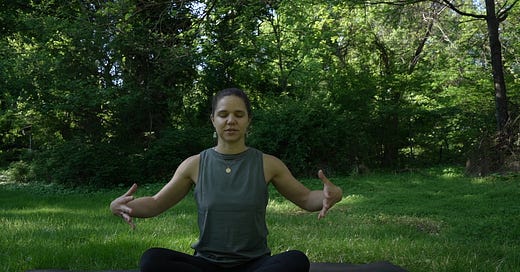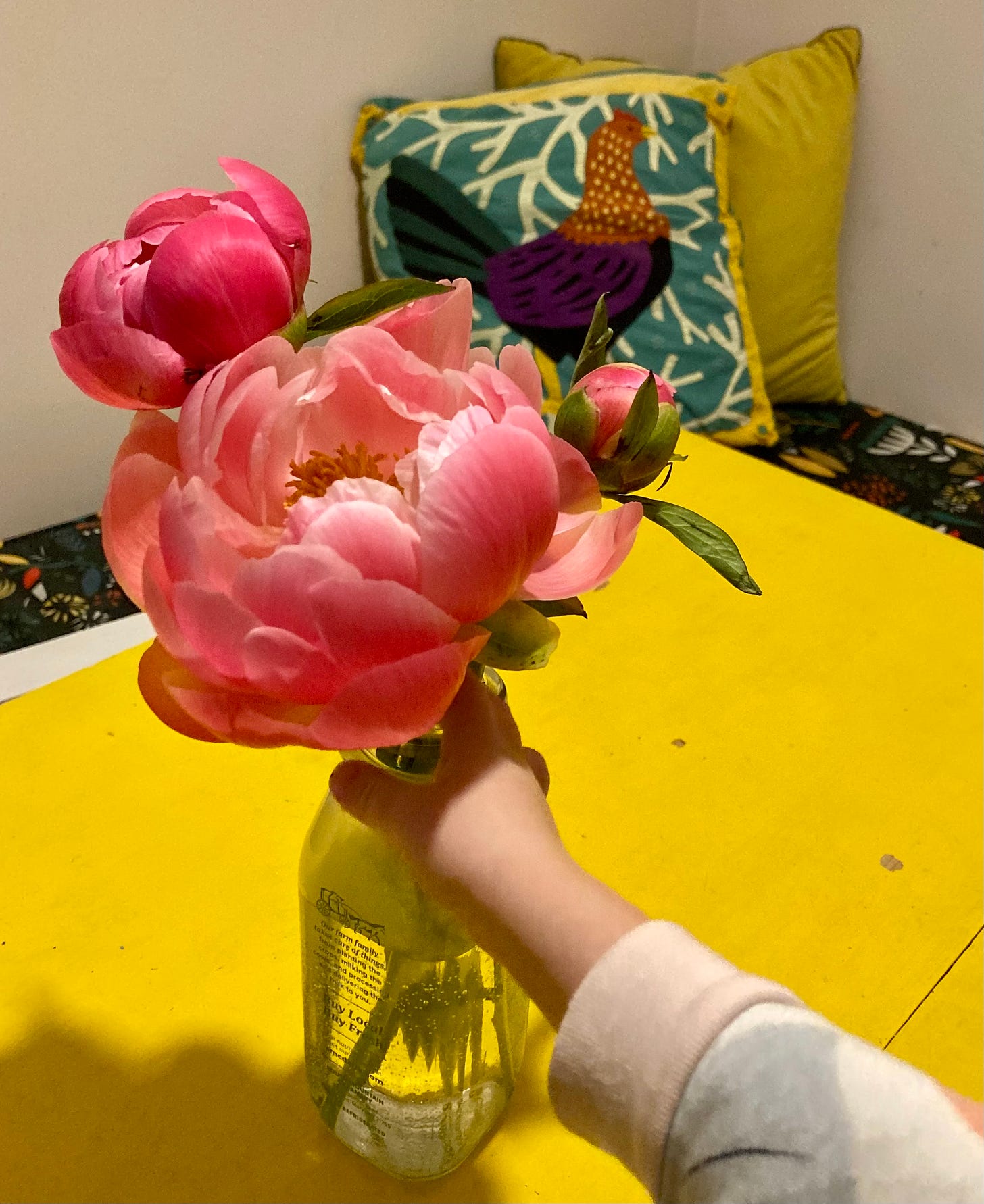Hello hello, and happy June!
I’m writing to you on the patio of one of my favorite coffee spots. The birds are chirping, my skin is warm with sunshine, and I saw a baby turtle on my run this morning. I hope your morning is just as lovely.
Today I have a fun & challenging yoga conditioning class for you, and it’s free for all <3
So, what do I mean by “yoga conditioning”, exactly? Well, for one, you can expect a yoga conditioning class to include more strength work. Maybe that’s obvious. More than that though, when I teach a conditioning class, I consider ways that we can weave functional, everyday movements into class, such as getting up and down off the floor— a simple movement that has a tendency to become difficult and less accessible as we age. I consider ways we can add load to our practice (a very basic example of adding progressive load would be to come to anjaneyasana, or a low lunge, with your hands on the floor, then raise your arms, then hold blocks or weights in your hands overhead). Sometimes I consider how we can embody a familiar yoga posture in a new or unexpected way— not just for the sake of novelty, but for the opportunity to understand our bodies a bit better, and because doing the same exact posture or movement the same way over and over can lead to injury down the road. I consider all the different ways a joint can move (for example, your spine flexes/fwd folds, extends/backbends, laterally flexes/side-bends, and rotates/twists) and try to include as many of those movements as I can, because we want to continue to be able to move our joints through all of their “degrees of freedom,”1 as we get older. I also consider how we can incorporate movements that challenge the brain, like the surprise seated twist—>utkatasana transition in this class (thanks Jenni Rawlings).
All of these ingredients tend to lead to a fun practice that is both mentally and physically challenging and leaves you feeling strong, unified, and, well, good. We move all around the mat, we move the body through all three planes of movement, and while it is tricky at times, I do think this class is still accessible for beginners and seasoned yogis alike, and modifications are offered as per usual :)
Inspiring me right now: how should it be?
We attach expectation to pretty much everything we do, whether we are aware of it or not. You need to go to the bank, for example. You expect to get in your car, an uneventful drive, completing your errand, coming home. There is an unconscious assumption of: “This is how it should go. This is how it will be.” So when your car doesn’t start, or there is road work, or a long line, or the teller is rude to you, then you get irritated, angry, or flustered, because it “shouldn't have” been that way. Or, say you’re trying to write a newsletter about attachment and expectation, and you expect that your toddler will play independently while you write, but instead she wants you to read the same book to her six times in a row and focus all of your attention on playing babies… ask me how I know.
In this way, attaching to our expectations not only causes suffering, but also makes us kind of… emotionally fragile, right? As in, we’re only content when things are going as we anticipated?
In the Yoga Sutras, Patanjali talks about the five kleshas, or “afflictions” (have also seen this word translated as “poisons”) that impede us in our yogic journey towards wholeness. 2 of the kleshas are raga (attachment) and dvesha (aversion).
Yoga Sutras 2:7-8 state:
sukha-anuśayī rāgaḥ // attachment is that which rests on pleasant experiences.
dukha-anusayi-dvesah // aversion is that which rests on sorrowful experiences.
Or we can look to Matthew Remski’s modern translation of these Sutras:
Addiction turns pleasure into a thing.
Dissociation runs away from experience.
Sometimes the Sutras can feel sort of heady & mystical, but I feel this particular concept so tangibly in my daily life, and maybe you do too — we pull pleasurable things towards us, we push discomfort & unpleasantness away, and we do it pretty much all day long.
Yoga asks us to be here for it all.
Easier said than done, of course. Judith Lasater offers a simple mantra for gently unraveling the knot of expectation, attachment and aversion, which is actually a question:
How should it be?
I’ve been repeating this mantra-question quietly to myself in moments of unexpected frustration or discomfort. I notice that it fosters more openness and relaxation around what actually is. Because really, it is what it is. Try it as your move through your day, and let me know what you think.
Til next time,
X Berlin
❤️🔥 ON DECK: A ~30 min Sleepytime Yin practice to support you in unwinding your mind and bod for sleep. Basically the yoga equivalent of drinking a warm cup of chamomile tea.
❤️🔥 I want to teach at your retreat, event or workplace! Reply to this email or contact me HERE <3
❤️🔥 Sliding scale 1:1 yoga or meditation sessions with me:
Bernie Clark.















Share this post